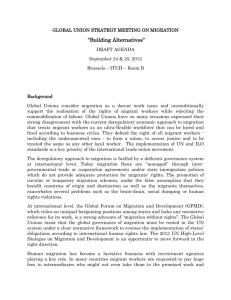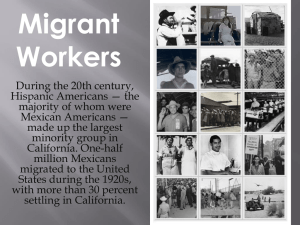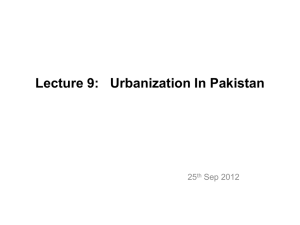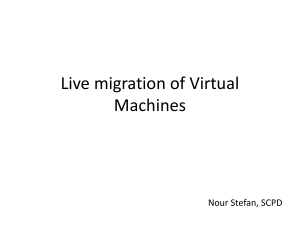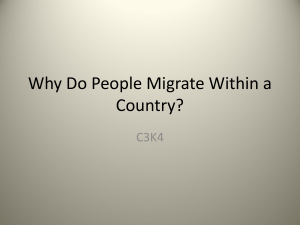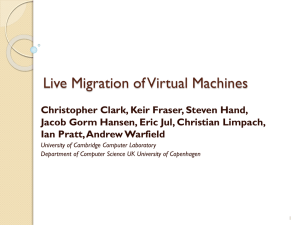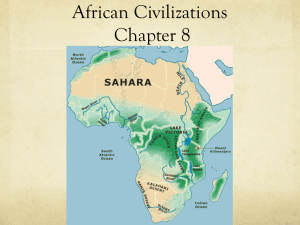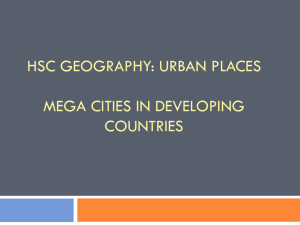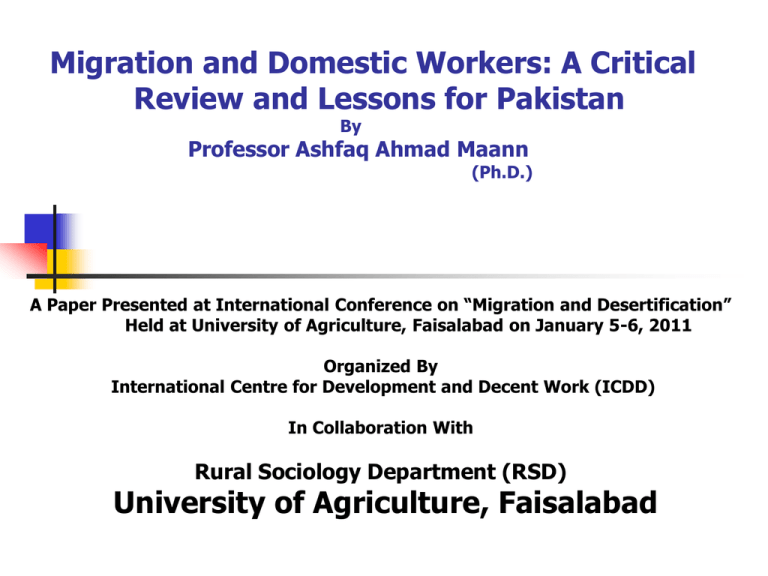
Migration and Domestic Workers: A Critical
Review and Lessons for Pakistan
By
Professor Ashfaq Ahmad Maann
(Ph.D.)
A Paper Presented at International Conference on “Migration and Desertification”
Held at University of Agriculture, Faisalabad on January 5-6, 2011
Organized By
International Centre for Development and Decent Work (ICDD)
In Collaboration With
Rural Sociology Department (RSD)
University of Agriculture, Faisalabad
Rationale
Social environment at place of work (household labor)
Movements for domestic workers’ rights and welfare
Attention for domestic workers’ issues
Lesser attention paid in Pakistan
Domestic Worker
Works within the employers’ household
Perform different household duties
Some workers live within or besides the same household
Migration
International migration
Internal migration
Situation of Migrant Domestic Workers in
Gulf and Middle Eastern Countries
Place of Origin
South & South-East
Asia/Africa
Thailand,
Bangladesh,
Philippines
India, Indonesia,
Pakistan, Sri Lanka
Vietnam and
Mongolia
Place of Destination
Persian Gulf/Middle East
Saudi Arabia, UAE,
Kuwait
Bahrain, Lebanon
Hong Kong, Singapore,
Taiwan,
Malaysia
Major Characteristics of Migrant
Domestic Workers/Servants
Background Characteristics
Over 75 % migrant worker
Gender
Will
Education
Skill
Poverty
Lower middle class
Major Characteristics of Migrant
Domestic Workers/Servants
Incentives (Pull Factors)
Adventure
Independence
Training
Upward social mobility
Major Characteristics of Migrant
Domestic Workers/Servants
Disincentives
Restrictive contract systems/contract
Enslavement/contractual bondage
Abuse and exploitation
Involuntary servitude
Strangers
Payment to recruitment agencies and brokers
Major Characteristics of Migrant
Domestic Workers/Servants
Violence against Female Domestic Workers
Overwork, 11-20 hours work a day
(both day and night)
Restricted movement
Slapping
Rape
Forcibly working in more than one household
Refusal of days off
Non-payment of wages
A reduced salary
(Locked inside or move with permission)
Major Characteristics of Migrant
Domestic Workers/Servants
Social and Cultural Issues
Influence on children upbringing
Potential for sexual relationship
Racial discrimination
Symbolic forms of prejudice
Poor living conditions
Lack of food and privacy
Major Characteristics of Migrant
Domestic Workers/Servants
Legal and Visa Issues
Passport holding
Illegal or out dated visa
Runaways
Violations of agreements
Police complaints
Dead body organs
RURAL-URBAN MIGRATION AND
DOMESTIC WORKERS IN INDIA
Interstate migrants
80 million
Domestic workers
20 million (one-fourth of the total)
Women, girls and children
92 % of the domestic workers
Under age 14 years
20% of female domestic workers
Tremendous increase in women migrant workers
Individual or migration in women groups
Traveling very long distances even for short term work
Regular streams of new migrant domestic workers
Willing workers for a very small amount of money
RURAL-URBAN MIGRATION AND
DOMESTIC WORKERS IN INDIA
SHOCKING FINDING
Inhuman working conditions
Verbal and sexual abuse
No grievance redressal mechanism
RURAL-URBAN MIGRATION AND DOMESTIC
WORKERS IN PAKISTAN: LESSONS LEARNT
THROUGH PARTICIPANT OBSERVATION
Domestic Workers in Socio-Cultural Context of Pakistan
Place of Origin
(Rural)
Place of Destination
(Urban)
Free residence
Residence/Non-residence
Big advance but low pay
Better pay but lesser or no advance
Full control over nature
and hours of work
Partial control over nature
and hours of work
Dissatisfaction with work
Partial satisfaction with work
RURAL-URBAN MIGRATION AND DOMESTIC
WORKERS IN PAKISTAN: LESSONS LEARNT
THROUGH PARTICIPANT OBSERVATION
Place of Origin
(Rural)
Place of Destination
(Urban)
Conditions/environment
Conditions/environment
More violence/abuse
Lesser violence/abuse
Sexual harassment/assault
Sexual harassment/assault
Difficult to runaway
Easier to runaway
Difficult to report to police
Easier to police
Difficult to report to media
Easier to report to media
Difficult to get legal help
Easier to get legal help
Background Characteristics
Literacy
Family size
Income
Caste
Age
Religion
History
Reference
Identity
Surity
Gender
Poverty
Skill (driver, cook)
RURAL-URBAN MIGRATION AND DOMESTIC
WORKERS IN PAKISTAN: LESSONS LEARNT
THROUGH PARTICIPANT OBSERVATION
Place of Origin
(Rural)
Place of Destination
(Urban)
Lesser chances to stop/cut payment
More chances to stop/cut payment
Lesser chances for illegal cases
More chances for illegal cases
Difficult to change employer
Easier to change employer
Difficult to find new/alternate work
Easier to find new/alternate work
Pushing to rural-urban or
Pushing to urban-urban or
Rural-rural migration
Urban-rural migration
Conclusion and future agenda for
Pakistan
A historical and universal phenomena
International and internal migration as domestic work/worker differential
Need for research in Pakistan

